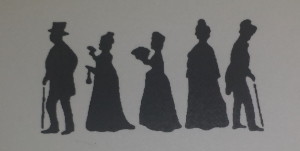About 800 million years ago, a massive glacier sculpted the hills and valleys of Westborough. The first people to arrive 8,000 years ago were Native Americans, who paddled dugout canoes up the Sudbury, Assabet, and Concord Rivers (SuAsCo) to their headwaters in Westborough. In Cedar Swamp and nearby hills, the Native Americans discovered quartzite, a stone ideal for fashioning spear points, arrow heads, and stone tools. Later, their descendants, the Nipmucs (Fresh Water People) settled in seasonal camps of hunter-gatherers around Cedar Swamp, Lake Chauncy, Lake Hoccomocco, and Charlestown Meadows.
Native American trails crisscrossed Westborough: the Narragansett Trail (South Street) led to Providence, and the trail over Milk Street traveled west to Canada. The Old Connecticut Path, from Massachusetts Bay into the heart of New England, played a key role in the European exploration of Westborough in the 1630s. Fay Mountain, the highest point in eastern Massachusetts, served as a major landmark. Permanent Native American settlements were the Wamesits on the Assabet River in Marlborough (Ockoocangansett) and the Nipmucs on the Blackstone River in Grafton (Hassanamisett). With nearly 600 members, the current Nipmuc Community gathers at the Hassanamisco Reservation in Grafton, their ancestral home. They are a “state acknowledged” tribe. More information on Nipmuc history can be found at www.nipmucnation.org.
Westborough became the 100th town in Massachusetts in 1717, but its settlement by Europeans dates back to the late 1600’s when early settlers farmed the land near Lake Chauncy. As the town grew, the advent of the railroad in 1834 transformed its rural agricultural way of life into a bustling manufacturing center producing such widely diverse products as straw hats, bicycles, boots and shoes, and sleighs for shipment across the country. Continuing to grow and prosper, Westborough has attracted many talented and creative people to settle within its borders. Today, it is a dynamic community with a healthy mix of residences, wooded trails, and industry, particularly high technology.
The Westborough Civic Club and Westborough Historical Society originally commissioned Kristina Nilson Allen, a writer and local historian, to produce a Westborough history book in 1984 and to incorporate many newly discovered vintage photographs. On the Beaten Path in 2021 became digitized and freely available at this link: https://archive.org/details/
Highlights of Westborough’s history include:
• In 1794 Eli Whitney, born in Westborough, patented the cotton gin while he was a tutor in Savannah Georgia. The cotton gin could process more than a thousand times as much cotton in a day as slave labor could. This trebled the value of land of the plantations and led to increased demand for slavery to cultivate and pick the cotton.
• The first state reform school for boys in the country was established in 1849, called the Westboro Reform School, later the Lyman School for boys.
• During the 1870’s the National Straw Works on East Main Street was the largest straw hat manufacturer in the country, employing more than 2,000 people.
• Westborough is the setting of the novel, Annie Kilburn (1887/88) by William Dean Howells, prolific author and editor of the Atlantic Monthly.
• Annapolis graduate Admiral Louis E. Denfeld served on destroyers in World War I and World War II. In 1945-1947 he served as chief of Naval Personnel and Commander in Chief of the Pacific. Under President Harry Truman, Denfeld was Chief of Naval Operations and a member of the Joint Chiefs of Staff from 1947-1949.
• Westborough-born Esther Forbes was awarded the Pulitzer Prize in 1943 for The Life and Times of Paul Revere and the Newbery Prize in 1944 for her classic children’s book, Johnny Tremain.
• Nikki Stone won the gold medal in aerial skiing at the 1998 World Olympics in Nagano, Japan. Other Westborough Olympians include Ashley Hayden in luge and James Campbell in hockey.
Westborough Timeline
1633 First European, John Oldham, travels on Old Connecticut Path
1704 Rice boys captured, taken to Canada
1717 Westborough incorporated as 100th colonial town
1724 First church built at Powder Hill. Rev. Ebenezer Parkman ordained
1776 General Washington stops at Amsden-Gale Tavern
1794 Native son Eli Whitney patents the cotton gin
1810 Boston-Worcester Turnpike completed
1824 Lafayette stops at Wesson Tavern
1834 Boston-Worcester steam railroad extended to Westborough
1839 First Town Hall raised
1848 First State Reform School opened
1861 Civil War Company K, 13th Regiment formed
1867 Frederick Douglas lectures in Town Hall
1880 First telephone lines laid in town
1897 Trolley line opens at Tufts Machine site
1908 New public library building opens
1926 Forbes High School is dedicated
1932 Otis Street Airport opens
1947 Westborough Speedway opens
1953 Tornado cuts a half-mile path through town, killing five
1969 Route 495 opens through Westborough
1975 Town buys Country Club Golf Course
2005 Westborough named #36 “best places to live” in the U.S.
2008 Bay State Commons opens
2017 Westborough celebrates its 300th Anniversary
2020 Coronavirus Pandemic closes Westborough Schools
